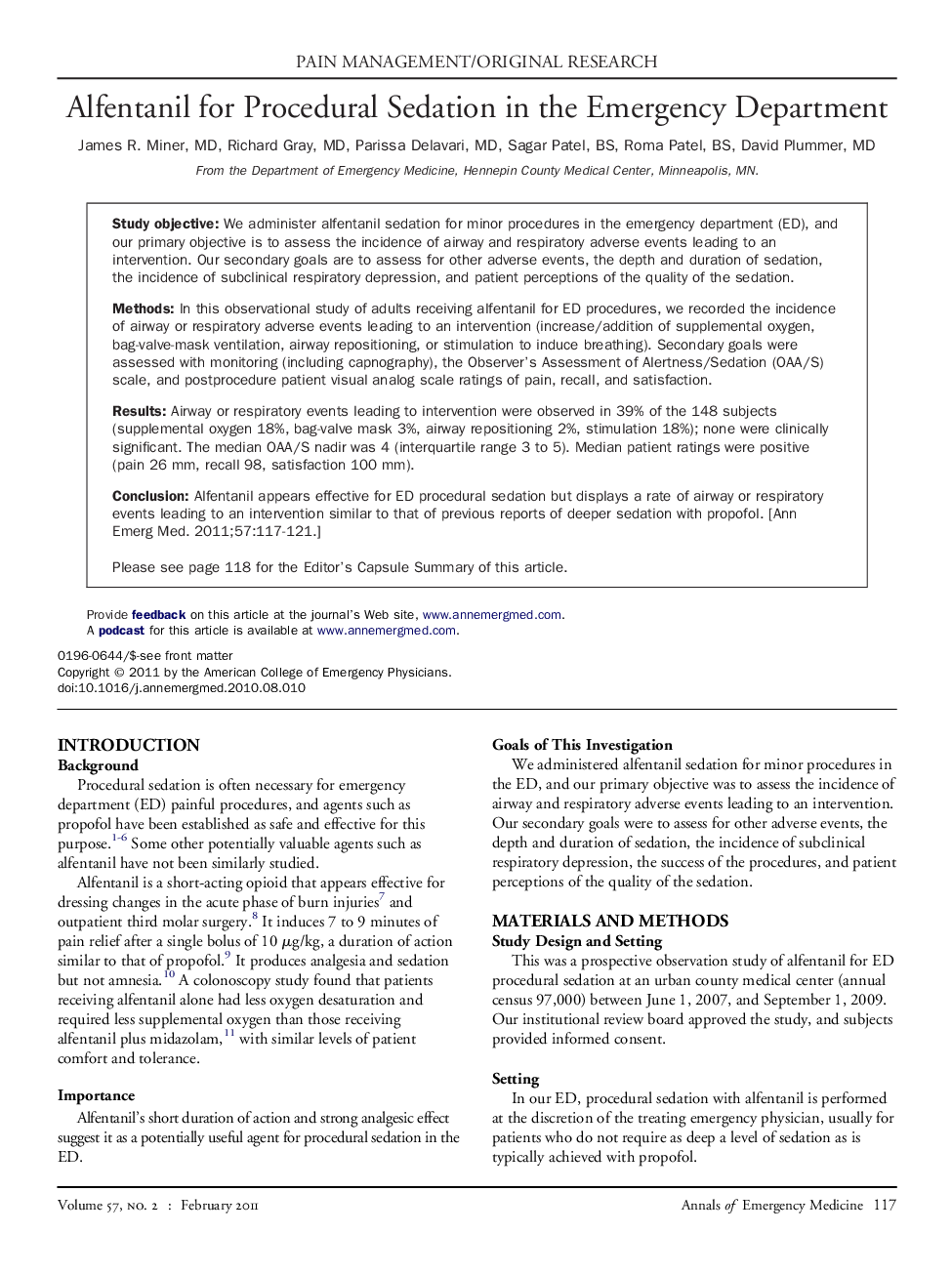| Article ID | Journal | Published Year | Pages | File Type |
|---|---|---|---|---|
| 3231060 | Annals of Emergency Medicine | 2011 | 5 Pages |
Study objectiveWe administer alfentanil sedation for minor procedures in the emergency department (ED), and our primary objective is to assess the incidence of airway and respiratory adverse events leading to an intervention. Our secondary goals are to assess for other adverse events, the depth and duration of sedation, the incidence of subclinical respiratory depression, and patient perceptions of the quality of the sedation.MethodsIn this observational study of adults receiving alfentanil for ED procedures, we recorded the incidence of airway or respiratory adverse events leading to an intervention (increase/addition of supplemental oxygen, bag-valve-mask ventilation, airway repositioning, or stimulation to induce breathing). Secondary goals were assessed with monitoring (including capnography), the Observer's Assessment of Alertness/Sedation (OAA/S) scale, and postprocedure patient visual analog scale ratings of pain, recall, and satisfaction.ResultsAirway or respiratory events leading to intervention were observed in 39% of the 148 subjects (supplemental oxygen 18%, bag-valve mask 3%, airway repositioning 2%, stimulation 18%); none were clinically significant. The median OAA/S nadir was 4 (interquartile range 3 to 5). Median patient ratings were positive (pain 26 mm, recall 98, satisfaction 100 mm).ConclusionAlfentanil appears effective for ED procedural sedation but displays a rate of airway or respiratory events leading to an intervention similar to that of previous reports of deeper sedation with propofol.
